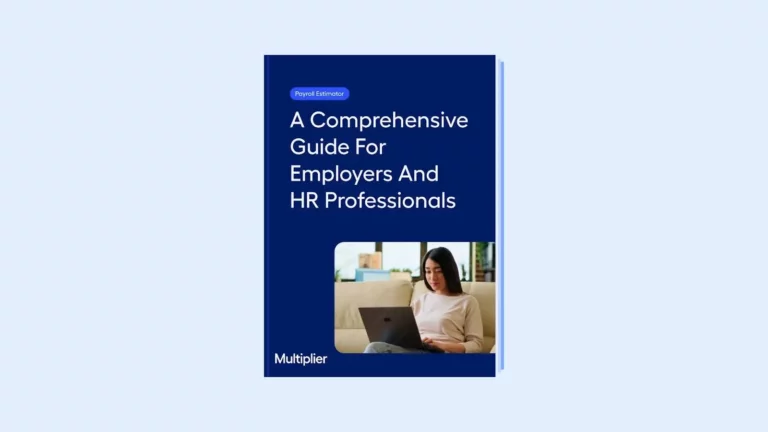One of the best ways to improve company culture and employee engagement is professional development in the workplace. Your employees continually learn new skills while your business reaps the rewards of growing a highly-capable workforce. With this in mind, you’d assume professional development is common, which isn’t the case. One study showed 59% of employees have primarily self-taught skills, with no advanced training provided by employers.
That’s a lot of professionals out there who lack investment and the skills needed to move up the ladder. The most frustrating part is that employers can benefit from professional development without breaking the bank — all it takes is an open-minded approach. In this article, we’ll highlight some effective ways to promote professional development in the workplace.
What is professional development?
Although we learn as we work and pick up skills over time, you shouldn’t mistake it for professional development. Learning through experience is part of being human. Personal development is a tailored training process to gain vital skills and knowledge for career progression.
Notice the difference? Basic, often self-taught skills help to mold people into good employees for the company. Professional development offers the tools for a person to be the best possible version of themselves, enabling career progression and growing valuable assets for the business.
There are many tried and tested ways to promote professional development in the workplace. But remember, the purpose of the development is to help your employees, which subsequently improves your business. Tailor training to their wants, needs, and future progression.
Best ways to promote professional development
Leadership training
Not all heroes wear capes, and not all leaders lead. But they could, given the opportunity. Leadership training is among the most effective ways to promote professional development in the workplace. It’s not about creating a conveyor belt of managers; studies show leadership training increases learning capacity and performance by as much as 25%.
Leadership training can be conducted internally or externally, depending on your available resources. However, many companies use online training and professional development experts to ensure consistency and the highest-quality employee experience. Also, external training offers insight unrelated to your company or industry, allowing leaders to develop unique thinking and encouraging creative approaches.
Mentorship
Sometimes, the best professional development is learning from a more experienced and skilled colleague, a mentor. The benefit of such schemes is creating a productive culture with inclusion, support, and progression as cornerstones. We’ve all had mentors in our personal or professional lives, guiding us through challenging times and providing the tools to succeed without them. Sounds like something your employees could benefit from, doesn’t it?
There’s no one-size-fits-all approach to mentorship. It depends on the time and flexibility available to the mentor and mentee. Some companies prefer a more structured approach with training courses, analysis, and performance reviews. Whereas others may gain more from on-the-job experience, such as shadowing, allowing employees to explore what other roles have to offer and where their professional journey will take them.
Utilize technology
Technology continues to evolve and shows no signs of slowing. Regardless of your task, there’s technology to help you achieve goals and improve your business in the process. Professional development is no different. From online courses to specialist software to webinars and beyond — it can all be used for professional development and the wide range of processes involved.
Training software offers a detailed overview of your employees’ professional development journey, using progress trackers and success metrics to learn more about their skills and forecast future progress.
Of course, you can’t learn everything you need about someone from software or a spreadsheet, but, as Sherlock Holmes said:
“Data! Data! Data! I can’t make bricks without clay!”
The data is not a Northstar, but it does help you recognize patterns in skills, habits, and tendencies that may require work.
Value all skill sets
Soft skills refer to everyday abilities, such as communication and organization — essentially, it teaches employees how to develop professionalism in the workplace. Hard skills are role-based abilities and knowledge, often gained through formal training. Both sets of skills are essential and play a role in a person’s professional development. Even the world’s geniuses could learn a few things.
Again, this is where individualizing professional development is critical. An effort to improve both soft and hard skills helps businesses achieve a vast array of goals and suits the unique needs of employees. Amid a talent shortage, with 87% of businesses admitting skill gaps, it pays to have a broader spectrum of skills on your team.
Shout successes from the rooftops
You should always recognize and celebrate your employee’s successes, especially if it’s due to professional development. Inspiration is an influential factor in the workplace. When one employee begins to climb the ladder, others will see it’s a realistic opportunity for growth.
Even if it makes your team blush, post their successes on your social media, Slack channels, and company newsletter. Once the initial embarrassment wears off, employees get a boost knowing their employer is proud of their accomplishments and has faith in the investment. Sometimes this is all it takes to deliver an important message to employees, reminding them that they’re in charge of their career progression — you’re just here to facilitate it.
Why is professional development important in the workplace?
Personal development has great potential for exploration and creativity. Whether your goal is improved retention, employee engagement, or pretty much anything else — professional development can help you achieve great things!
One of the most valuable aspects of professional development is the loyalty and commitment it installs in employees. 94% of employees claim they’d stay at a company longer if there were opportunities for personal and professional development in the workplace.
When you invest in your people, you’re investing in your company’s future while avoiding the pitfalls of recruiting and training new employees. Recruiting a replacement can cost as much as 33% of an employee’s annual salary. The average salary in the US is around $60K, so if you’re a numbers person, here’s a number to make you shudder — it could cost as much as $20K to hire new talent. Ouch.
When it comes to the business itself, creating personal development opportunities in the workplace is crucial for filling skill gaps and ensuring you have what (who) you need to reach new heights. After all, talent is a hot commodity these days. Unless your business is an automated AI machine, people are at the company’s core — the better they are, the better you are.
Identify individual talent needs
Every workplace is a breeding ground for undiscovered and underused talent. Before exploring the various ways to promote professional development in the workplace, identify the talent needs of your employees. Development is most effective when an employer understands the current talents of their team and what they need to level up, whether in their current role or a future one.
You’ll need to learn more about your company and team, so communication and analysis are vital for success. Skill gap analysis and forecasting future needs are essential for creating growth strategies. If you plan to introduce new roles, maybe you already have the best people for the job. They just need the appropriate upskilling or reskilling.
On the employee side, there needs to be an honest discussion about where they hope to be in the coming years and what skills they need to get there. Conduct ideation sessions, performance reviews, and ask for feedback. Don’t create roles and expect people to adopt the required skills. Work towards aligned goals and enjoy shared successes.
Overcoming global employer challenges with Multiplier
Professional development is one of many challenges and responsibilities of global employers. Every detail, from jurisdictional tax documents to overseeing global payroll, can be tedious and potentially catastrophic. Luckily, Multiplier has the solution. We take care of the boring stuff while you create a global workforce of elite professionals. Deal?
The Multiplier platform helps you easily hire global talent and serve as their employer of record. Taxes? Sorted. Payroll? Organized. Insurance? We’ve got you covered!
Are you looking to hire a talented global workforce to accelerate your company into the future? Talk to our experts today!







